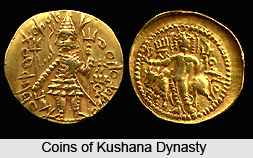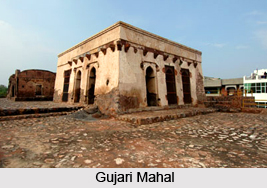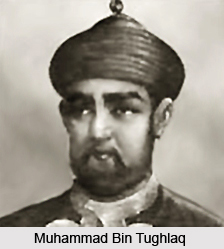 History of Hisar district, Haryana, dates back to 1354 A.D. The place was founded by Firoz Shah Tughlaq, a Muslim ruler who named it after an Arabic word `Hissar` which refers to `fort`. Initially the place was known as Hisar-e-Firoza but over time its name changed to only Hissar. Archaeological excavations at Kunal, Banawali and Agroha have furnished that the place were inhabited by the people of pre Haarrapan or pre historic times. Pillars have also been discovered in the region, which belong to 234 A.D, the era of Emperor Ashoka. Coins of Kushana Empire have also been found which further illuminates the ancient history of the district.
History of Hisar district, Haryana, dates back to 1354 A.D. The place was founded by Firoz Shah Tughlaq, a Muslim ruler who named it after an Arabic word `Hissar` which refers to `fort`. Initially the place was known as Hisar-e-Firoza but over time its name changed to only Hissar. Archaeological excavations at Kunal, Banawali and Agroha have furnished that the place were inhabited by the people of pre Haarrapan or pre historic times. Pillars have also been discovered in the region, which belong to 234 A.D, the era of Emperor Ashoka. Coins of Kushana Empire have also been found which further illuminates the ancient history of the district.
Ancient History of Hissar District
The year of 1354 A.D. marks the beginning of construction work in Hissar, supervised by Firoz Shah. The place had boundary walls which were made of stones brought from Narsai hills. A big ditch also surrounded the place which was dug around the wall. The city also housed a fort with a deep and large tank in which water was stored for replenishing the ditch. A palace also stands inside the fort which has a complex of different buildings. Beautiful gardens adorned the palace`s surroundings. It has been recorded that the city gained a proper visage after the work of about two and a half years. During that time, the Sultan used to instruct the nobles for getting their residence there. Burnt bricks and lime were used to construct the buildings. There were four gates in this fort city namely Talaqi Gate at west, Nagori Gate at south and at east Mori Gate and Delhi Gate.
 Gujari Mahal
Gujari Mahal
The city was in fact established during the construction of the palace which was popularly known as Gujari Mahal. The palace still stands in the district exhibiting its majestic beauty. The palace consists of royal residence of Sultan Firoz Shah and other buildings including Diwan-e-Aam, Shahi Darwaza, a Mosque, a Hamam, Baradari with three tehkhanas and a pillar. Intricately carved stone pillars adorn this beautiful palace and the architectural style testifies dignified artistry. Materials of Jain or Hindu temples were used to build the palace complex.
Medeival History of Hissar District
Hissar was captured by the rebels in 1408 but the royal army of Emperor Muhammad Bin Tughlaq, recovered it. In the year 1411 Khizr Khan occupied the tract of Hansi. He also succeeded the throne of Delhi and became the first Sultan of Sayyid Dynasty. A part of the Hissar territory was given to Mahmud Hassan in 1420 as a reward for his appreciable services. During the rule of Lodhi Dynasty (1451-1526) Hissar was granted to Muhabbat Khan by the emperor Bahlol Lodi (1451-89).
Hissar served as an important centre for the empire of Ibrahim Lodi when the country was invaded by Babur in 1524-26. When Babur discovered that troops from Hissar, under the commandership of Hamid Khan were proceeding  towards him, he sent Humayun along with the army and defeated their opponents. For his success in first military expedition, the city of Hissar was granted to Humayun by Babur. Humayun reigned over the place from 1530 to 1540 and later from 1555 to 1556. Jama Masjid was constructed during his rule by Amir Muhammad in 1535. Hissar once again gained prominence during the reign of Akbar from 1556-1605. It also gained the status of the headquarters of sirkar, the revenue division. In the Indian history, Hissar came to be known as the Duke of Wellington of Mughal Era.
towards him, he sent Humayun along with the army and defeated their opponents. For his success in first military expedition, the city of Hissar was granted to Humayun by Babur. Humayun reigned over the place from 1530 to 1540 and later from 1555 to 1556. Jama Masjid was constructed during his rule by Amir Muhammad in 1535. Hissar once again gained prominence during the reign of Akbar from 1556-1605. It also gained the status of the headquarters of sirkar, the revenue division. In the Indian history, Hissar came to be known as the Duke of Wellington of Mughal Era.
Modern History of Hissar District
After the Mughals, Hissar came under the rule of George Thomas, an Irish adventurer, during the rule of British Empire in India. He was an independent ruler from 1797 to 1802. During early sixties Hissar became an important place owing to the establishment of Agriculture University as an extension of the Punjab Agriculture University, Ludhiana. After that the economic development of the place also gained pace due to the various government policies. A number of entrepreneurs have also been attracted to the place due to the industrial policy of the government which has led to the industrialization of the place.






